




Return To Catalogue - Egypt Postage due and Official stamps - Egypt Postage due stamps of 1888, forgeries
Note: on my website many of the
pictures can not be seen! They are of course present in the cd's;
contact me if you want to purchase them: evert@klaseboer.com.
10 pa red 20 pa red 1 Pi red 2 Pi red 5 Pi red
For the specialist: A star and crescent is impressed on the backside of the stamp (sort of watermark), they also exist with no watermark at all. The stamps have perforation 10 1/2. Remainders were cancelled to order and sold to dealers.
Types:
Four types exists of each stamp, with minute differences:
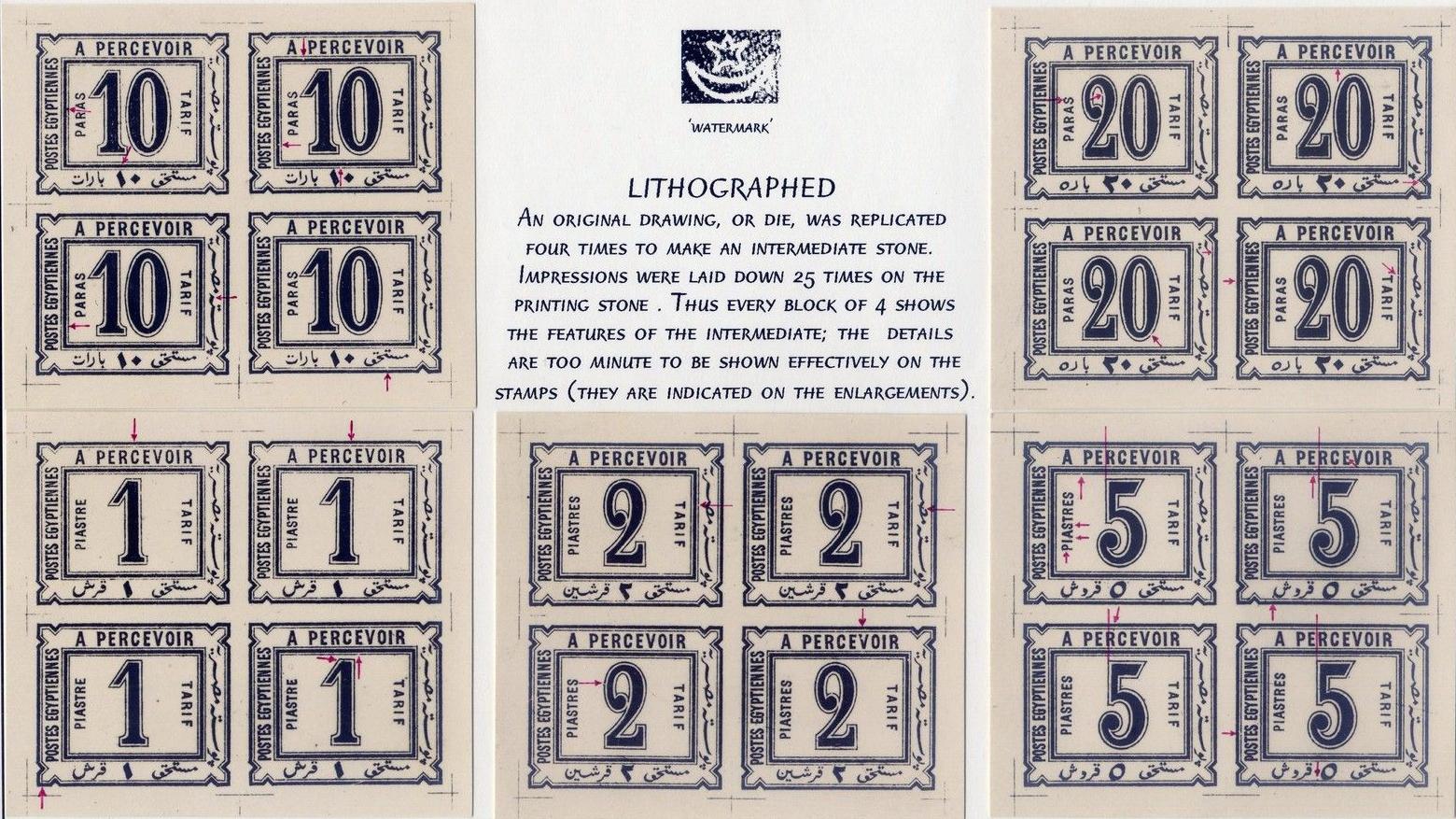
Proofs:

Proof impression of the values, the large letters, the word
'PIASTRES' and the Arabic value inscription at the left bottom
part.
Forged cancels:
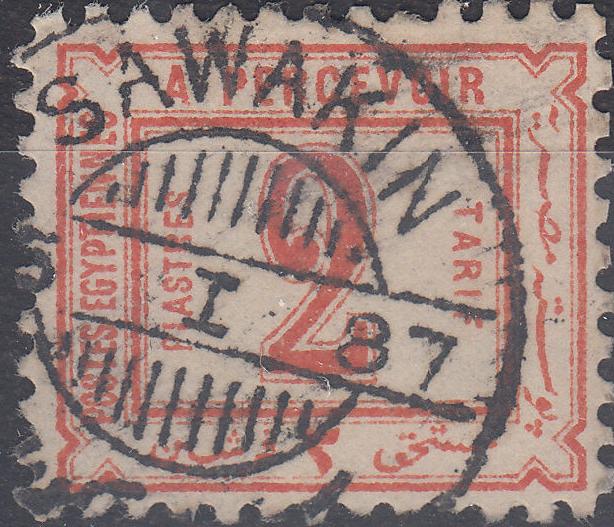

I suspect this cancel 'SAWAKIN 5 I 87' to be applied to
'cancelled to order' stamps on remainders.
Forgeries:
The first dangerous forgeries appeared in 1898 with watermark (all values) and without watermark (10 pa and 20 pa) and were marketed as 'reprints'.
Dangerous forgeries exist (if anybody has information concerning these forgeries, please contact me!). They exists with and without the same impressed watermark as the original stamps. The perforation of some of these forgeries is 14.


(Forgeries)
The following text can be found in 'The American
Philatelist' Vol. XXXIII, October 1919, No 1, page 29 (see
http://www.archive.org)
Forgeries of First Issue Egyptian Postage Due.
These forgeries have been on the London market for some time past
in small quantities, and a sheet of the 5 piastres has been seen
with full inscriptions on the margins.
General Characteristics of the Forgeries.
1 The color is dull pink instead of vermilion.
2 The perforation is 11 instead of 10 1/2.
3 The inscription "A PERCEVOIR" is in thicker type.
4 The width of the forgery is 22 mm instead of 22 1/2 mm.
5 The Arabic inscriptions are not correct.
6 The watermark is impressed, as in the originals, but varies in
shape; the star is not so large, and the crescent is narrower.
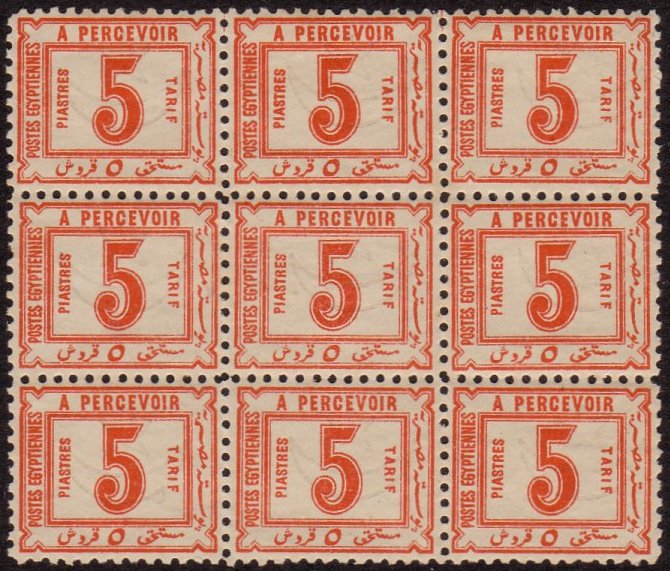
A block of Barkhausen 5 Pi forgeries with forged watermark
(Barkhausen was the designer of these stamps). They don't show
the distinguishing characteristics of the genuine four types.

Imperforate 5 Pi forgery in the wrong colour: black. This might
actually be a proof instead of a forgery?
Fournier has made forgeries of these stamps. They exist with forged cancel 'EBNOUL' or 'SEDFA 26 MAI or 30 I' (interchangeable numbers according to the Serrane guide.

SEDFA and EBNOUB forged cancels made by Fournier, reduced sizes.
Several forgeries exists with a forged 'POSTE EGIZIANE PORTO SAID 3 GEN 78 T1' cancel:







Forgeries, possibly of Italian origins, all with the same cancel
'POSTE EGIZIANE PORTO SAID 3 GEN 78 T1'. The date is 1878 (before
the stamps were even issued!). I've also seen these forgeries
pasted on parts of letters. The same forged cancel can be found
on other stamps of Egypt (see last images).
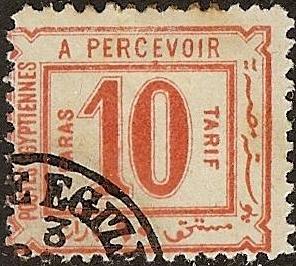

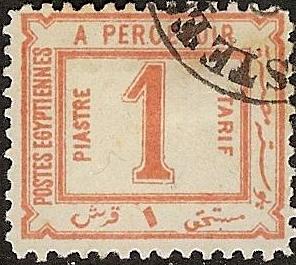


A different set of forgeries, yet with the same forged cancel
'POSTE EGIZIANE PORTO SAID 3 GEN 78 T1' applied in the corners of
the stamp.


These forgeries, but imperforate and uncancelled; 20 pa: break in
the inner ellipse of the '0', the '2' almost touches the word
'PARAS'.
5 Pi: extra dot to the right above the Arabic 'five' at the
bottom.

20 pa forgery with the same 'POSTE EGIZIANE PORTO SAID 3 GEN 78
T1' cancel. Note that as in the above imperforate forgery, there
is a break in the inner ellipse of the large '0'.
Other set of forgeries:



A block of four stamps with 1 pi, 2 pi, 10 pa and 20 pa; all
forgeries. Next to it some cancelled imperforate forgeries by the
same forger (the same printing flaws appear).

Most likely the same forgery, although offered as Type 2 on an
Internet auction.
The distinguishing characteristics are according
to me, generally blotchy impression and badly perforated:
10 pa: smudged left bottom corner, left bottom Arabic inscription
is different from a genuine stamp. Smudges to the right of the
'0' and top of 'F' of 'TARIF'
20 pa: scratch pointing to 'F' of 'TARIF' (not always present?).
Scratch sticking out of the upper part of the lower leg of the
'2'.
1 Pi: Blotch of ink in upper right corner. Typical break in the
lower left part of the '1' and in the framelines below it.
2 Pi: Several breaks under 'A P'.
Often the cancel is 'ALEXANDRIE 4 SEPT 09 EGYPTE' (only 1/4 of
this cancel).